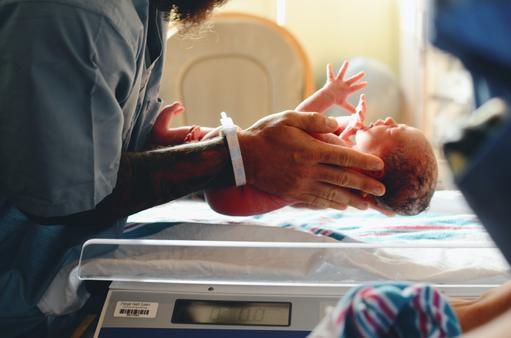Tag

NHS maternity units are in crisis because of the shortage of midwives and the increase in births. According to a UK National Audit Office 2013 Report, there's a shortage of 2,300 midwives and births are at their highest level for 40 years. This is straining overstretched maternity units and resulting in closures and blunders.
Closures of maternity units
"Where the demand for maternity services might outstrip capacity, some trusts are restricting access through pre-emptive caps on numbers or reactive short-term closures in order to safeguard the quality of care," the Report says.
Between April and September 2012, 28% of NHS maternity units closed for 12 hours or more, including eight that shut for a total of at least two weeks, either because they lacked physical capacity or midwives.
Health Minister's response
In response to the Report, Dr Dan Poulter, the UK government's health minister, said there were 1,300 more midwives than in 2010 and 5,000 more had been in training since then. The number of midwives in the NHS, he said, was increasing twice as quickly as the birth-rate. Also, the presence of consultant doctors on maternity wards had increased significantly.
Notwithstanding, the National Audit Office report drew attention to the high dropout rate and impending retirements of midwives. This could mean that shortages will continue.
The impact of the rise in fertility
During the 1990s the total fertility rate (TFR) in England and Wales saw a steady decline. Between 2001 and 2008 it gradually increased. Since 2008 the TFR has remained relatively stable, fluctuating between 1.90 and 1.94 children per woman and peaking in 2010.
There is no single explanation for this rise in fertility. Possible causes may include: more women currently in their twenties having children, more older women giving birth, increases in the numbers of foreign born-women who tend to have higher fertility than UK-born women and government policy and the economic climate indirectly influencing individuals' decisions around childbearing.
The impact of migration on maternity units
Between 2000 and 2010 births in England increased by over 114,000: from 572,826 to 687,007. Immigration has played a role in this. Three quarters of the increase in births was to women born outside the UK. Overall, in 2010, over a quarter of all live births in England were to mothers born abroad. The proportion of such births has grown consistently every year since 1990, doubling over the past decade: from approximately 92,000 in 2000 to almost 180,000 in 2010. This represents nearly 500 births on average every day
Although the Minister is right and an increasing number of midwives are in training, their numbers have not kept pace with the overall growth in numbers of births. Before 2010 UK governments permitted high levels of net migration without ensuring that maternity services received adequate staffing.
The majority of mums are satisfied
Although the Report suggests that many NHS maternity units need to improve, most of the 700,000 women who give birth in England each year are happy with the NHS service they receive.
Notwithstanding, over 25% of maternity units were forced to close. The National Audit Office report drew attention to maternity units having to shut temporarily or turn away expectant mothers because of the dearth of midwives and struggle to cope with the current baby boom.
Quality of care compromised
The paucity of trained staff affects the quality of care. In 2011, one in every 133 babies in England was stillborn or died within a week of birth. As the Report suggests, births are also becoming increasingly complex, putting even more demands on midwives and maternity services. Cathy Warwick, CEO of the Royal College of Midwives, said: "We are many thousands of midwives short of the number needed to deliver safe, high quality care. Births are at a 40-year high and . . . show that this is set to continue".
Increase insurance cover
According to the National Audit Office's Report, maternity units fail mothers and babies so often that one fifth of their budgets is now being spent on negligence cases.
Over the past five years, lawsuits involving alleged failings in maternity care increased by 80%. Increased litigation has meant that in 2012-13 almost £0.5bn was spent on malpractice claims because of blunders during labour. This amounts to about 20% of the NHS's total budget for negligence claims, which translates into about £700 per birth being spent on clinical negligence cover.
Absence of consultants
One concern is the lack of senior staff available on maternity units. More than half of maternity units were not meeting the levels of consultant presence recommended by the Royal College of Obstetricians and Gynaecologists. The Report says that while 73% of obstetric units in hospitals had a consultant on duty for at least 60 hours a week, 53% did not provide as much consultant cover as recommended.
Takeaways
Over the coming years, maternity services in England face significant challenges driven by changing demographics, rising birth rates, increasing fiscal constraints and the continuing rise in maternal morbidity rates. In order to maintain high levels of safety, the service will need to change.
Dr David Richmond, president of the Royal College of Obstetricians and Gynaecologists, suggests that: "Although the UK is generally a safe place for women to give birth, we have known for some time that pressure on maternity services is growing . . . More consultants are needed to deal with not only the rapidly increasing birth rate, but the rise in complex pregnancies, with older mothers, maternal obesity and multiple pregnancies at the fore".









